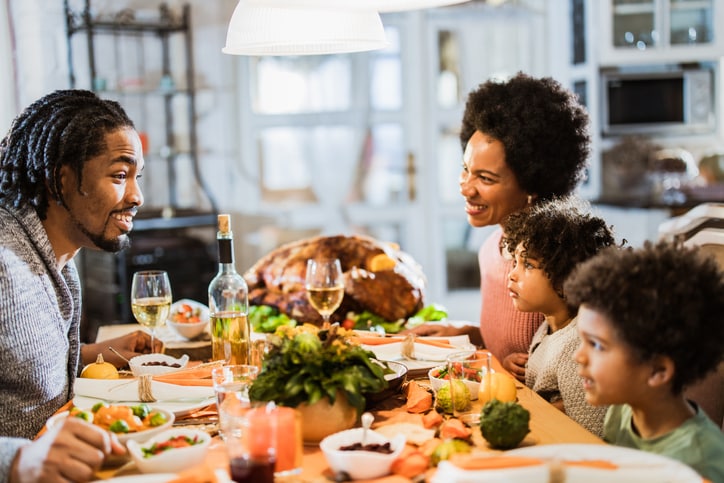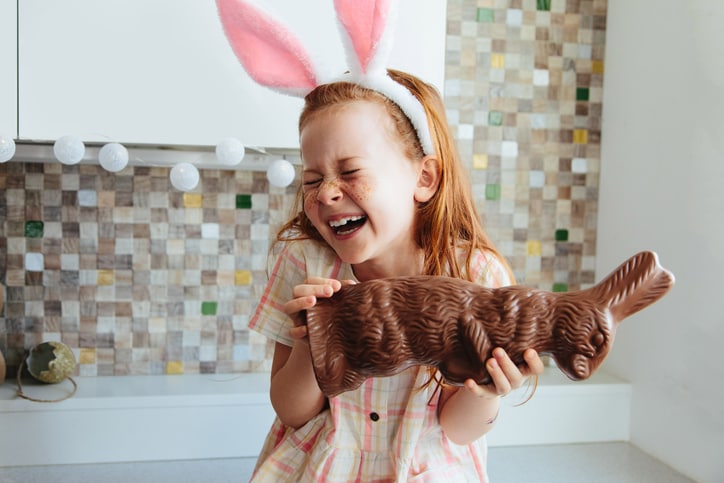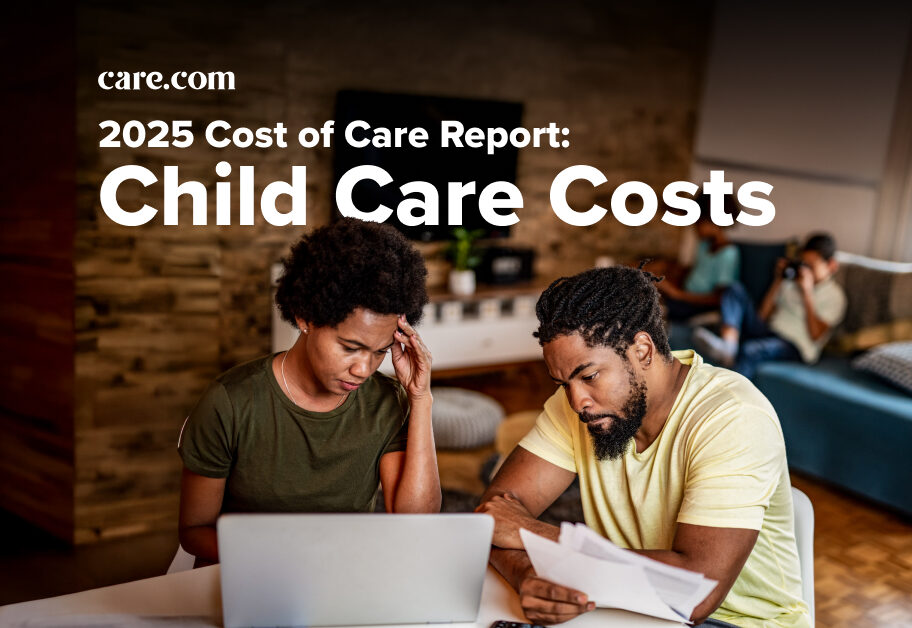When many of us were younger, lessons about Thanksgiving involved little more than a tidy story about Native Americans and Pilgrims sitting down to share a cornucopia of food together in peace and harmony. The end. This account is a far cry from the full Thanksgiving story.
While a peace treaty between English settlers and the Wampanoag Tribe was signed in April of 1621 (despite many Wampanoag people opposing leader Massasoit’s decision), the relationship went sour. After the Pilgrims continued to encroach on the Wampanoag’s territory, a war broke out, and over 40% of the tribe was killed and many others were sold into slavery.
“As a result of the English language dominance and master narrative, many historical stories, such as the story of Thanksgiving, have been sanitized for children,” says Richard Meyers, an Oglala Lakota citizen and tribal relations specialist for Black Hills National Forest.
But Thanksgiving for kids doesn’t have to solely equal hand turkeys, Meyers and others note. There are a number of age-appropriate ways to share a more accurate and respectful history of Thanksgiving to young kids. As you gather together to honor gratitude and celebrate family and friends, consider these tips on how to explain Thanksgiving to a child, according to the experts.
How to explain thanksgiving to a child
1. Start with their existing knowledge of Thanksgiving
Before sharing information about Thanksgiving with younger kids (think kindergarten), Alexandra Neves, professor of TESOL/bilingual education and the chair of Teacher Education Programs in the Western New Mexico University School of Education, suggests asking about/gauging what they already know, as opposed to treating the topic like a blank slate.
“Starting with what children know about the holiday is important because chances are they might have heard of some of the history and traditions before,” Neves says. “When we start with what kids already know, it gives them a chance to see that there is a different side — the indigenous perspective — to a story they’ve already heard.”
Also, as Meyers notes, this provides a good opportunity for kids to start to learn critical thinking skills — not everything they hear is the whole truth.
2. Commit to learning about Thanksgiving together
When it comes to Thanksgiving for kids, ultimately, how graphic and detailed you get with your child is a personal decision; but regardless of the route you take (or how much your child previously knew), prepare for a barrage of questions — and keep in mind, you don’t need to have (or act like you have) all the answers. Instead, Neves recommends committing to “learning together.”
“There is such beauty in the vulnerability of grown-ups sharing with their children that an account that they themselves grew up learning was not actually factual.”
—Shari D. Cameron, head of school
“You can explain that a lot of us have not heard the indigenous side of the story, so we don’t know a lot about it,” Neves says. “Offer to learn together by reading indigenous-authored picture books that talk about the holiday from a Native American perspective rather than from the European colonists’.”
“There is such beauty in the vulnerability of grown-ups sharing with their children that an account that they themselves grew up learning was not actually factual,” adds Shari D. Cameron, head of school at BASIS Independent Brooklyn Lower School. “This is the perfect time to teach young children that we are all constantly learning and reflecting on what we believe to be true in an effort to remain open to different perspectives and truths.”
Additionally, as Cameron points out: “Keep in mind, the real Thanksgiving story has many big themes which will not all be covered in one conversation.”
3. Go with the flow
Anyone who’s ever had a conversation with a kid knows that one topic can evolve into another at warp speed. Hence, Cameron notes, be ready and open for the questions and observations about society in general that may come after having a discussion about Thanksgiving’s real history.
“The real story of Thanksgiving may pave the way for further discussions about fairness, injustice and disparity, which surprisingly, young children seem to be able to understand at a deeper level than many adults anticipate,” Cameron notes. “Adults should be open to flow in the direction that the conversation goes and be comfortable enough with not necessarily having all of the answers.”
“There’s not an exact age when it’s time to have a conversation about the hierarchy of the Western world and how it’s unfair. Instead, think of it more as a narrative that unfolds over time.”
—Richard Meyers, Oglala Lakota citizen and tribal relations specialist for Black Hills National Forest
And to that point, don’t be surprised if eventually your child is perceptive enough to ask why Thanksgiving’s real history has been seemingly shrouded in mystery all these years. A big question that you don’t need to necessarily have a concrete answer for, Meyers notes.
“There’s not an exact age when it’s time to have a conversation about the hierarchy of the Western world and how it’s unfair,” Meyers says. “Instead, think of it more as a narrative that unfolds over time.”
4. Encourage intellectual curiosity
Just as Thanksgiving conversations can lead to discussions about other social injustices and revised histories, Meyers notes that it’s as good a time as any to encourage healthy curiosity in your child — in all aspects of life. Put another way: They should feel comfortable being inquisitive at home, at school and out in the world.
“Parents should encourage an intellectual curiosity that’s appropriate to the level of respect required,” Meyers says, explaining that a child needn’t be rude or demanding when they hear something they don’t understand (or even know to be false) when they’re at school or around someone else, but instead “respectful with healthy curiosity.”
“Parents can give the example that when they’re at someone else’s house and things are done differently, they just kind of roll with it at the time,” he says.
5. Find resources to explain the real Thanksgiving story for kids
“There are plenty of books and guides out there that can help parents and teachers to discuss these issues,” Neves says. Here are a few she suggests:
- “The Circle of Thanks: Native American Poems and Songs of Thanksgiving”
- “Clambake: A Wampanoag Tradition (We Are Still Here: Native Americans Today)”
- “1621: A New Look at Thanksgiving”
- “We Are Grateful Otsaliheliga”
For older kids and parents, Meyers recommends the following books:
- “An Indigenous Peoples’ History of the United States”
- “Lies My Teacher Told Me: Everything Your American History Textbook Got Wrong”
Cameron also recommends the following resources:
6. Discuss the present day
After discussing Thanksgiving’s history and/or reading indigenous-authored picture books, Neves suggests shifting the conversation and education to Native Americans today. “Be sure to make the point that Native Americans have not disappeared,” she says. “They are still here, including the Wampanoag.”
From reading to attending workshops to watching a video (this one is best for older kids), there are a number of ways to learn about tribes currently. Another great way to stay educated and up to date, shop at Native-owned bookshops, like Birchbark Books in Minneapolis or Red Planet Books & Comics in Albuquerque, New Mexico, or support them online.
7. Consider including traditional food
In most households, food is at the center of a Thanksgiving celebration, so for some, it’s a good opportunity to learn more about traditional Native American foods (and hopefully be a gateway to other topics).
“The only thing my kids really knew about Thanksgiving when they were in preschool was that there was a lot of food,” says Rachel Levinson, a mom of two in Brooklyn, New York. “So instead of trying to explain things they were too young to grasp, we decided to start with learning about Native American food, and then made a few dishes for Thanksgiving.”
8. Be thankful
Thanksgiving has an ugly history, but it’s still OK to gather with loved ones, and in general, be grateful. In fact, Cameron notes, it’s important not to exclude gratitude from conversations about Thanksgiving with young kids.
She says: “Parents and guardians should still make space for children to share with them the many things for which they are grateful and be prepared, and be willing to convey those things and people for which they are thankful as well.”
The point, of course, is to do these things while acknowledging indigenous perspectives and historical accuracy. In other words, depending on your child’s age, don’t only make it about turkey and being thankful.
The bottom line
“There’s nothing wrong with celebrating and being thankful during this time of year, but it is necessary to appropriately celebrate the many strengths and accomplishments of the Wampanoag tribe and other Indigenous Peoples,” Neves adds.
It’s also worth noting, Meyers explains, that within the Native American community, different perspectives on Thanksgiving exist. “When people, such as at the Wampanoag, feel robbed of something and know their history, there’s likely more of a mourning element,” he says.
He continues: “Some people in the U.S. go full in on the capitalist Thanksgiving; others celebrate it by not celebrating it for activist purposes. Personally, I’m happy to have the day off of work and spend time with my family.”





